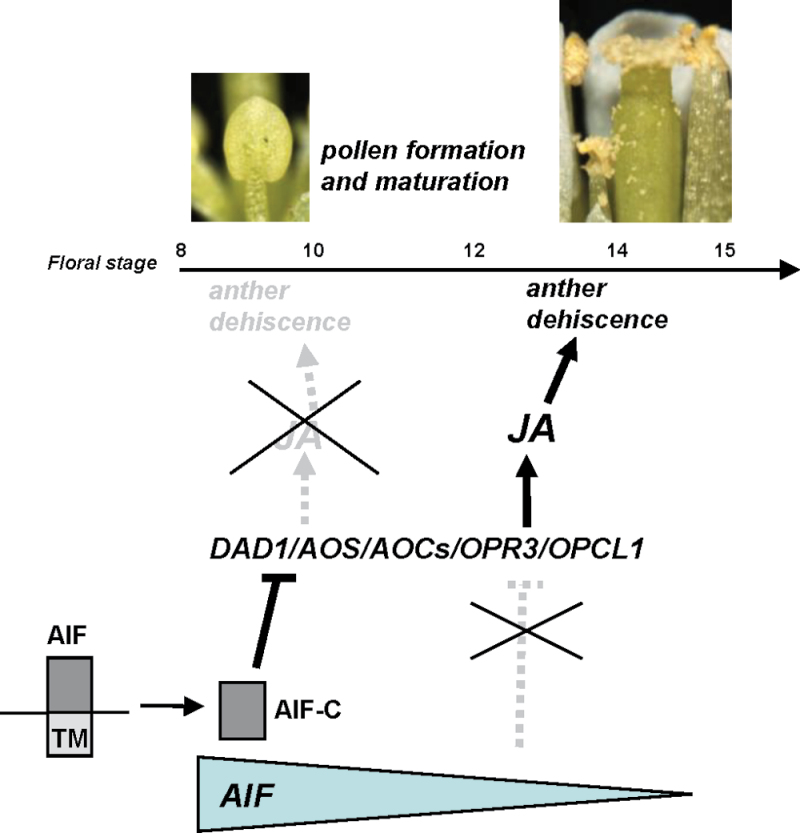Fig. 11.
Model for the function of AIF in regulating stamen development in Arabidopsis. The gradient of AIF activity is illustrated by the gradual reduction in the size of the grey triangle during flower maturation. In wild-type Arabidopsis, the high expression of AIF and processing and release of AIF-C from the ER suppressed (—|) the expression of genes that participate in JA biosynthesis, such as DAD1/AOS/AOCs/OPR3/OPCL1, and the JA production in anthers during early flower development and resulted in the inhibition of anther dehiscence. During late flower development, the decrease of the AIF expression to a threshold level activated the expression of DAD1/AOS/AOCs/OPR3/OPCL1 and increased (→) the JA production in the stamen. This caused the initiation (→) of anther dehiscence and resulted in the release of the normal mature pollen of wild-type flowers. In AIF-C+VP16 or antisense plants, the expression of DAD1/AOS/AOCs/OPR3/OPCL1 in stamen was activated during early flower development and resulted in a high level of JA production and ultimately caused early anther dehiscence. In contrast, in 35S:AIF-C and AIF-C+SRDX plants, the expression of DAD1/AOS/AOCs/OPR3/OPCL1 and the production of JA were suppressed by the high expression of AIF-C during all stages of flower development. This suppression prevented anther dehiscence and the release of pollen throughout flower development. The dashed (- - -) line/arrow indicates the pathways not activated in wild-type flowers. (This figure is available in colour at JXB online.)

